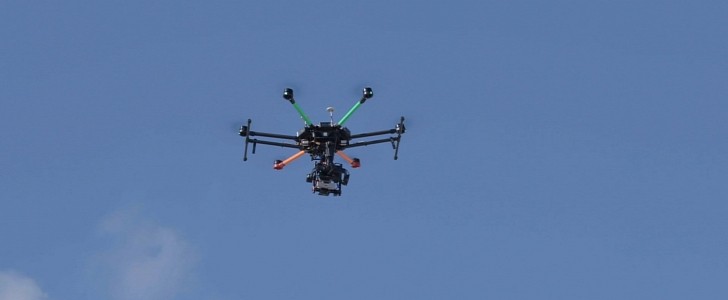Drones have come a long way as far as their technological capabilities go, but there are still some frustrating limitations that need to be addressed, such as their ability to fly for longer times. Honeywell’s new BVLOS (beyond visual line of sight) system promises to fix that problem, and many others.
Unmanned aerial vehicles (UAV), also known as drones, are impressive flying devices that can do a lot of things, from taking high-quality photos and videos to delivering goods, helping with rescue operations, or mapping locations that are otherwise way too inaccessible to humans. But there is still room for improvement when it comes to this type of aircraft. They could fly longer and rely less on human intervention.
Honeywell is an American-based company that specializes in aerospace technologies and it claims its new BVLOS suite can significantly improve the capabilities of drones.
The company says its system can make drones fly three times longer, have an increased payload capacity, be able to detect hazards up to 1.8 miles (3 km) away, and stream video of their progress anywhere in the world.
In order to achieve all of the above, Honeywell comes with a BVLOS suite that includes its 600-watt or 1,200-watt hydrogen fuel cells, the IntuVue RDR-84K multi-purpose radar, the company’s small UAV Satcom, and its inertial measurement units.
Honeywell claims the hydrogen fuel cell in the BVLOS system is way more efficient than batteries used in traditional drones, as it can operate three times longer. Moreover, unlike gasoline engines, it is a clean, green solution with no emissions and it's also considerably quieter.
The radar included in the suite is a multifunctional device with onboard software that helps to avoid hazards and obstacles on its own, with no secondary processor being required. It includes several useful features, such as terrain mapping, identifying landing zones, and works as a radar altimeter and a navigator in case GPS fails.
In order to find out more about the capabilities of its BVLOS suite, follow this link.
Honeywell is an American-based company that specializes in aerospace technologies and it claims its new BVLOS suite can significantly improve the capabilities of drones.
The company says its system can make drones fly three times longer, have an increased payload capacity, be able to detect hazards up to 1.8 miles (3 km) away, and stream video of their progress anywhere in the world.
In order to achieve all of the above, Honeywell comes with a BVLOS suite that includes its 600-watt or 1,200-watt hydrogen fuel cells, the IntuVue RDR-84K multi-purpose radar, the company’s small UAV Satcom, and its inertial measurement units.
Honeywell claims the hydrogen fuel cell in the BVLOS system is way more efficient than batteries used in traditional drones, as it can operate three times longer. Moreover, unlike gasoline engines, it is a clean, green solution with no emissions and it's also considerably quieter.
The radar included in the suite is a multifunctional device with onboard software that helps to avoid hazards and obstacles on its own, with no secondary processor being required. It includes several useful features, such as terrain mapping, identifying landing zones, and works as a radar altimeter and a navigator in case GPS fails.
In order to find out more about the capabilities of its BVLOS suite, follow this link.






